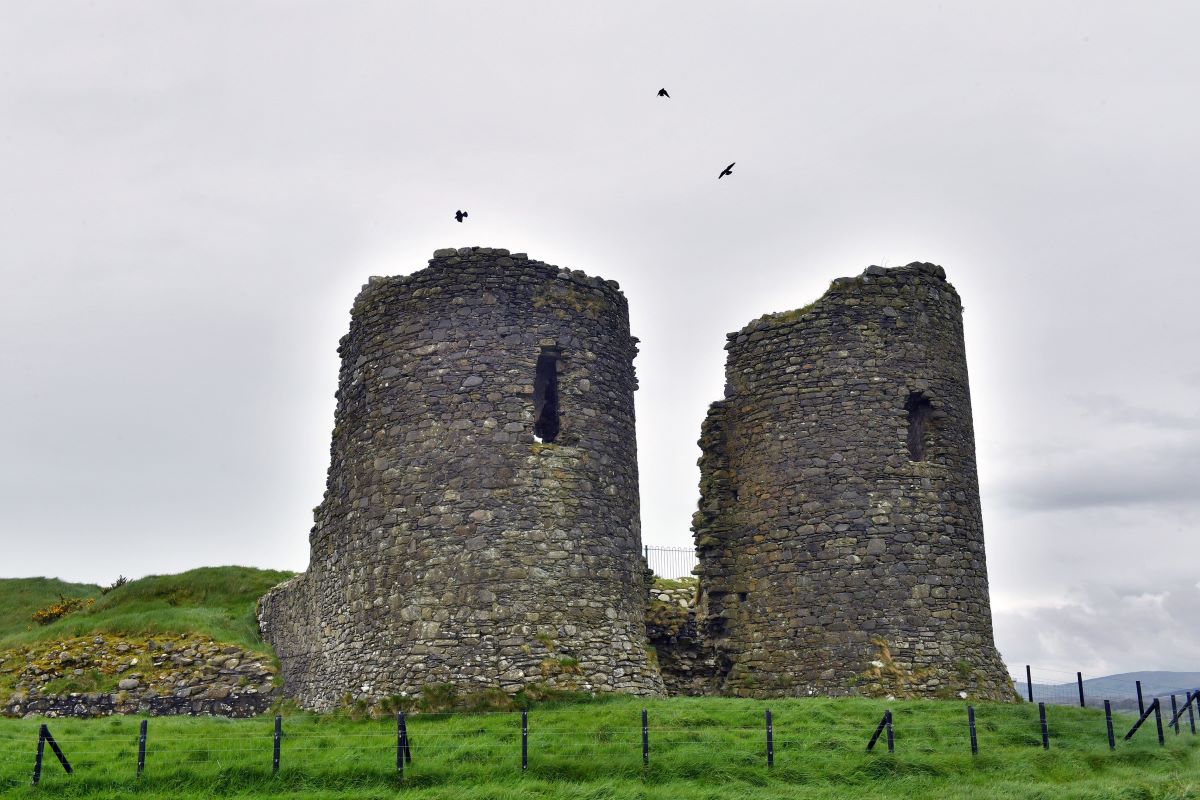Within the confides of Bessy Bell overlooking Newtownstewart is an O’Neill castle with a legacy spanning 700 years.
The remnants of this stone structure remains as a local monument to Ireland’s clan era, which met its demise at the hands of English settlers who took the castle down, brick-by-brick.
Harry Avery’s castle, as it’s known locally, is believed to have been built in the early 1300s by an O’Neill chieftain.
What sets Harry Avery’s Castle apart is its architectural design, which was remarkably advanced for its time.
Constructed with Normanic stone and featuring distinctive D-shaped twin towers reminiscent of Carrickfergus Castle, it stood as a testament to the engineering ingenuity of the local tribes.
The castle’s two-story rectangular structure is flanked by imposing towers on its south-facing side.
These towers, which remain to this day, resemble a gatehouse to the castle.
Though the exterior facade was constructed with stone, much of the interior and supports would have been crafted.
At where the front gates would have been, there is still a slot for the drawbar, and within the site, there is a chute for the toilet.
The remains suggest that the entrance to the courtyard would have required a stairwell at the rear of the castle.
The significance of Harry Avery’s Castle extends beyond its architectural merits; it is a repository of stories and legends passed down through generations.
One such tale revolves around its namesake, Harry Avery, a local chieftain who lived in Newtownstewart during the tumultuous years of the late 14th century.
Unlike his forebears, Harry was known for his love of peace and diplomacy, earning him the nickname ‘Aimhreidh’, meaning ‘turbulent’ in jest.
Despite his peaceful demeanour, Harry Avery was not without his trials and tribulations.
In the years following his father’s death, he found himself embroiled in a bitter feud with neighbouring clans and colonial authorities.
Yet, it was his act of generosity towards a group of monks that would define his reputation for humility.
When the monks’ lands were ravaged by famine, Harry Avery selflessly donated his own land in Carrick, ensuring their survival and earning their eternal gratitude.
The legacy of Harry Avery’s Castle is also intertwined with the broader history of Ireland’s struggle for independence.
During the plantation of Ulster in the early 17th century, much of the surrounding land was seized and redistributed to English and Scottish settlers. While many castles were repurposed or demolished to make way for new settlements, Harry Avery’s Castle met a different fate; its stones quarried for use in other construction projects.
In recent decades, efforts have been made to preserve and protect Harry Avery’s Castle for future generations.
In 1965, the site was formally recognised as a tourist attraction, with new signs erected to guide visitors to the Bessy Bell monument.
Today, the castle is maintained as a state care monument under the Department for Communities.







